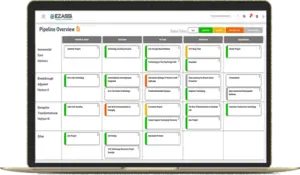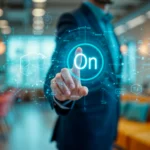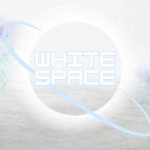Understanding the Innovation Pipeline:
Strategies for Effective Innovation Management and Idea Development
Why Innovation Matters to Consumers
Recent industry research reveals that consumers place a high value on innovation when choosing where to spend their money. In fact, studies—like those from McKinsey—show that the vast majority of customers actively seek out companies that challenge the status quo, offer fresh experiences, and continuously improve their products or services.
This desire for innovation signals that people want more than just reliability; they crave creative solutions, unique offerings, and brands that aren’t afraid to think outside the box. In a marketplace filled with choices, being innovative can be a pivotal factor in attracting and retaining loyal customers.
What is the Innovation Pipeline?
The innovation pipeline is a structured framework that transforms creative ideas into successful, market-ready solutions. By organizing the journey from ideation to commercialization, organizations can efficiently manage innovation and ensure that resources are focused on the most promising opportunities.
Customizing the Innovation Pipeline for Different Project Types
While the structure of an innovation pipeline offers a reliable path from idea to market, its real strength lies in its flexibility. No two innovation journeys will look exactly the same. The shape and speed of your pipeline—whether you’re in the heart of Silicon Valley or running a small R&D team in Rotterdam—should flex to fit your goals, resources, and the nature of the project itself.
For example:
- Launching something brand new (think the original iPhone or Tesla Roadster) often means more time and rigor at the front end—research, validation, and prototyping stages may require extra cycles, external perspectives, or even pilot partnerships before you’re ready for a wider launch.
- Introducing a variation—maybe a new flavor of kombucha or a limited-edition sneaker—relies heavily on efficient tweaks. The pipeline here can be streamlined, with rapid concept testing and faster decision gates.
- Renovating an existing offering calls for careful assessment in the initial stages (to understand what works and what doesn’t), but can move quickly into pilot testing and implementation since frameworks and core technology already exist.
By tailoring the pipeline stages, timeframes, and decision points, organizations ensure that both moonshot projects and incremental improvements move smoothly from sketch to shelf—without wasting resources or missing market windows. The beauty is in the balance: structured enough for consistency, yet flexible enough to handle anything from overnight ice cream flavors to next-generation smartwatches.
Key Stages of the Innovation Pipeline

Ideation
Innovation starts with generating and capturing ideas from diverse sources-brainstorming, customer feedback, market research, and crowdsourcing. The goal is to gather a broad range of opportunities.

Screening & Selection
Not every idea will make it through. Ideas are evaluated for feasibility, market potential, and alignment with business objectives. Only the strongest concepts move forward, ensuring optimal resource allocation.

Development & Prototyping
Selected ideas are developed into detailed concepts or prototypes. This phase includes defining features, building models, and testing for technical viability and user acceptance.

Testing & Validation
Prototypes or minimum viable products are tested internally and with target users. Feedback is collected to refine the solution and confirm its market readiness.

Commercialization
Validated innovations are launched with a comprehensive go-to-market strategy, including marketing, sales, and distribution planning to maximize impact.
The Stage-Gate Process
A stage-gate process separates each pipeline stage with a “gate” or a decision point where projects are reviewed against set criteria. This ensures rigorous assessment, efficient resource use, and risk mitigation at every step.
Benefits of a Structured Innovation Pipeline
- Clarity & OrganizationTransparent stages and gates make it easy to track progress and manage priorities.
- Resource OptimizationFocus on high-potential ideas to maximize time, budget, and talent.
- Risk ReductionEarly evaluation identifies issues before major investments are made.
- Strategic AlignmentKeeps innovation efforts aligned with business goals.
- Continuous ImprovementOngoing feedback and monitoring drive learning and adaptation.
A well-organized innovation pipeline, like the use of Ezassi’s Kanban board in Projects, provides the backbone for effective innovation management—systematically nurturing ideas and accelerating their journey to market.
To see how this plays out in the real world, consider how leading brands structure their own innovation pipelines. For example, Samsung has developed a robust framework that drives its ongoing stream of new products and solutions. The company’s innovation initiatives are divided across several specialized teams: Ventures, NEXT Product, Mergers & Acquisitions, and Partnerships. Each group brings a different expertise to the table—whether it’s designers and engineers in NEXT Product scouting for opportunities in AI and blockchain, or the Ventures arm searching for startups that can bolster Samsung’s capabilities.
This multifaceted approach demonstrates how a structured innovation pipeline, supported by cross-functional teams, enables organizations to capture, develop, and launch high-potential ideas efficiently. By combining systematic processes with targeted expertise, companies can ensure that the best ideas don’t just surface, but are actually brought to market with clarity, speed, and strategic alignment.
This multifaceted approach demonstrates how a structured innovation pipeline, supported by cross-functional teams, enables organizations to capture, develop, and launch high-potential ideas efficiently. By combining systematic processes with targeted expertise, companies can ensure that the best ideas don’t just surface, but are actually brought to market with clarity, speed, and strategic alignment.
Gaining a Competitive Edge
A structured innovation pipeline doesn’t just bring order to chaos—it also gives your organization a distinct competitive advantage. Studies show that 84% of consumers consider innovation important when choosing which companies to support. In today’s market, customers are drawn to brands that break the mold and set new standards, rather than simply following the crowd.
For example, performance supplement brands often leverage innovation pipelines to refine every aspect of a new product launch. By moving through phased research—identifying creative directions, refining design elements, and testing concepts against competitors—these companies can make data-driven decisions that differentiate their offerings. Such systematic approaches allow organizations to not only generate unique products but also to quickly respond to evolving market demands and stay ahead of the competition.
In short, a well-structured pipeline doesn’t just nurture good ideas; it transforms them into real-world advantages that keep your business at the forefront of your industry.

A well-organized innovation pipeline, like the use of Ezassi’s Kanban board in Projects, provides the backbone for effective innovation management systematically nurturing ideas and accelerating their journey to market.

The Task Assignment Process
Task assignment is critical for moving ideas efficiently through the innovation pipeline. Here’s how it works:
01
Intake and Prioritization
New ideas or business needs are collected and evaluated for strategic fit and potential value.
02
Cross-Functional Evaluation
Stakeholders from various departments assess feasibility, required resources, and expected ROI.
03
Assignment to the Right Teams
Tasks are matched with the appropriate expertise, whether it’s R&D, technology scouting, or external partners.
04
Workflow Tracking & Progress Monitoring
Digital tools and dashboards track task progress, identify bottlenecks, and ensure accountability.
A structured task assignment process streamlines innovation, promotes transparency, and ensures efficient use of resources-helping organizations move from idea to market-ready solution faster.
Importance of Workflow Tracking and Progress Monitoring
This step of the process is essential for visibility and accountability in the innovation pipeline. By using digital dashboards and innovation management platforms, organizations can:
- Track the real-time status of ideas, tasks, and projects
- Monitor key performance indicators (KPIs)
- Identify and address bottlenecks early
- Centralize data for easy access and reporting
Customizable reporting and role-based dashboards keep all stakeholders—from executives to project teams—informed and aligned. Regular updates enable data-driven decisions, efficient priority adjustments, and smooth project progression.
Integrating Research and Data into the Pipeline
An effective innovation pipeline doesn’t just track progress—it actively improves it. Leveraging a range of research methods, such as social listening, customer journey mapping, focus groups, or rapid testing tools, teams can continually gather insights that inform each stage. For example, using rapid concept testing platforms lets you validate assumptions quickly and refine ideas before they progress further. This iterative approach ensures every step is built on real feedback, not just gut instinct.
According to a McKinsey study, 84% of consumers say it is somewhat or very important that the company they buy from is innovative. This means customers are paying attention to organizations that break the mold and push boundaries. By integrating research and feedback loops directly into your workflow tracking, you position your team to respond dynamically to market needs and surpass competitors who are slower to adapt.
Ultimately, effective workflow tracking and progress monitoring foster transparency, streamline collaboration, and support continuous improvement—driving better innovation outcomes. When organizations combine rigorous tracking with ongoing research and data validation, they create a pipeline that doesn’t just move projects forward, but actively elevates the quality and impact of their innovations.

See how strategic pipeline management can streamline your innovation process. View the infographic for a visual breakdown of effective task assignments.
Innovation Pipeline Task Assignments






